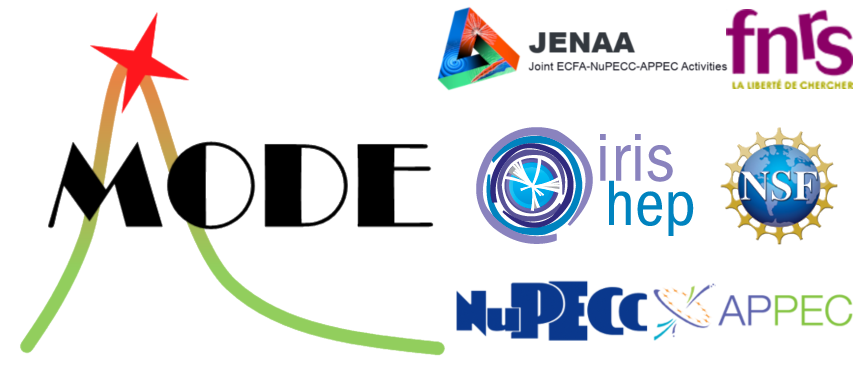Conveners
Progress in Computer Science
- Nicolas Gauger (Technische Universität Kaiserslautern)
Progress in Computer Science
- Nicolas Gauger (Technische Universität Kaiserslautern)
Progress in Computer Science
- Nicolas Gauger (Technische Universität Kaiserslautern)
Many acquired data are inherently relational: human or automated annotations create high value relational data. For example, a planet might belong to a stellar system which has a star of a certain type. This stellar system belongs to a galaxy which also has its own type (Fig.1).
Relational programming languages are the right tools to handle these strong structured data. Our...
Radiation therapy using protons or heavier ions is sensitive to range errors caused by misalignment of the patient, changes in patient anatomy, and uncertainties in treatment planning. It is therefore of the utmost importance to ensure treatment quality through range verification. Determining the position of the Bragg peak inside the patient can be done through various means such as prompt...
Proton computed tomography (pCT) is an emerging imaging modality, receiving increasing importance for treatment planning in hadron therapy. One of the core challenges in the reconstruction pipeline for the high-granularity Bergen pCT Digital Tracking Calorimeter (DTC) prototype is the efficient reconstruction of high-multiplicity proton traces throughout the scanner which, in contrast to...
Simulations of the detection process are an essential step in the
assessment of a proposed detector design. Often, complex Monte-Carlo
simulators with a wide range of applications are employed for this
task, as they provide the most realistic and adaptable computational
models for the interactions between particles and the detector. For
instance, the Bergen pCT collaboration develops a...
Automatic Differentiation is a powerful technique to evaluate the derivative of a function specified by a computer program. Thanks to the ROOT interpreter, Cling, this technique is available in ROOT for computing gradients and Hessian matrices of multi-dimensional functions.
We will present the current integration of this tool in the ROOT Mathematical libraries for computing gradients of...
The IRIS-HEP Analysis Grand Challenge (AGC) seeks to build and test a fully representative HL-LHC analysis based around new analysis tools being developed within IRIS-HEP and by others. The size of the HL-LHC datasets is expected to require fully distributed analyses sometimes sourcing 100’s of TB of data or event, later in the HL-LHC, PB-sized datasets. This talk will give a brief overview of...
In the ideal world, we describe our models with recognizable mathematical expressions and directly fit those models to large data sample with high performance. It turns out that this can be done with a CAS, using its symbolic expression trees as template to computational back-ends like JAX. The CAS can in fact further simplify the expression tree, which results in speed-ups in the numerical...
Proton computed tomography (pCT) is a medical imaging modality with the potential to improve the accuracy of treatment planning for proton-beam radiotherapy. It produces a three-dimensional image of the relative stopping power (RSP) distribution inside an object, given a list of positions and directions of protons before and after passing through the object, along with the corresponding energy...
The synthesization of fast reverse- and forward-mode gradients is the key to many algorithms in scientific computing such as meta-learning, optimization, uncertainty quantification, stability analysis, machine learning-accelerated simulations, and end-to-end learning. Enzyme is an automatic differentiation tool which in difference to other tools is built into the LLVM compiler toolchain to be...
